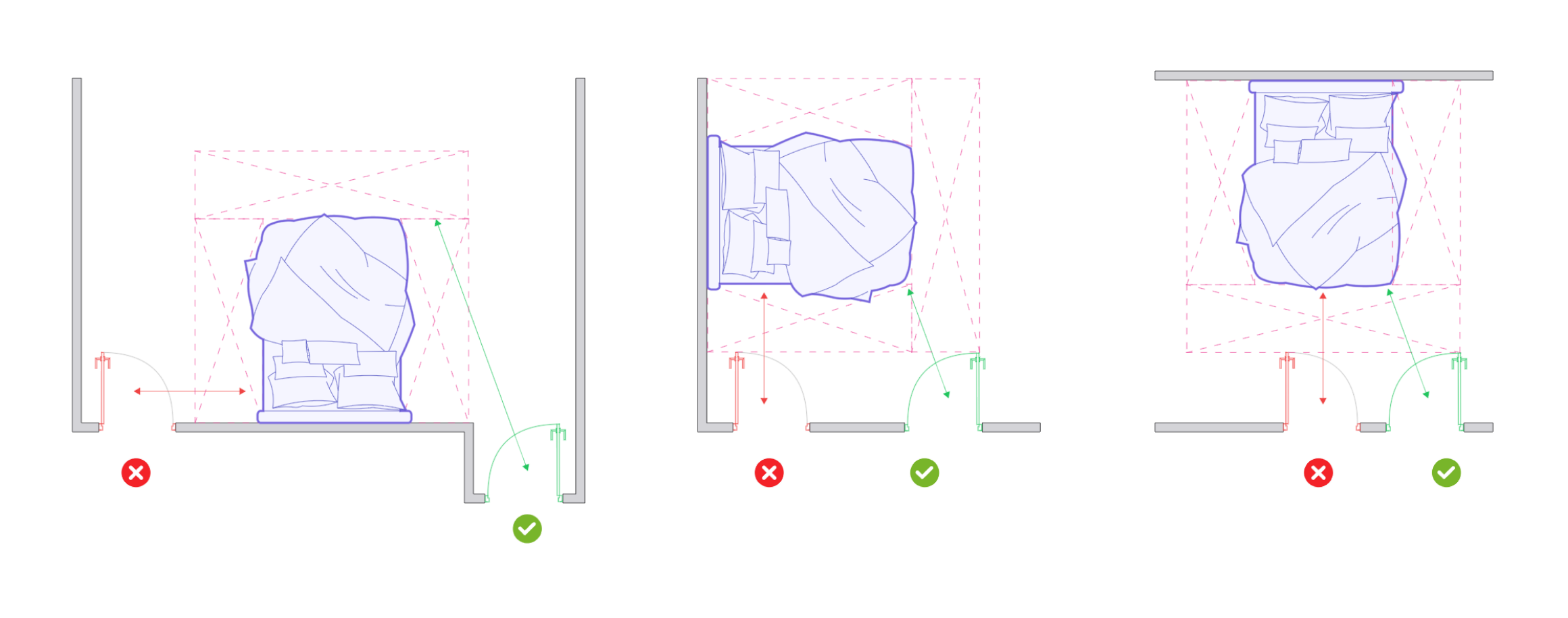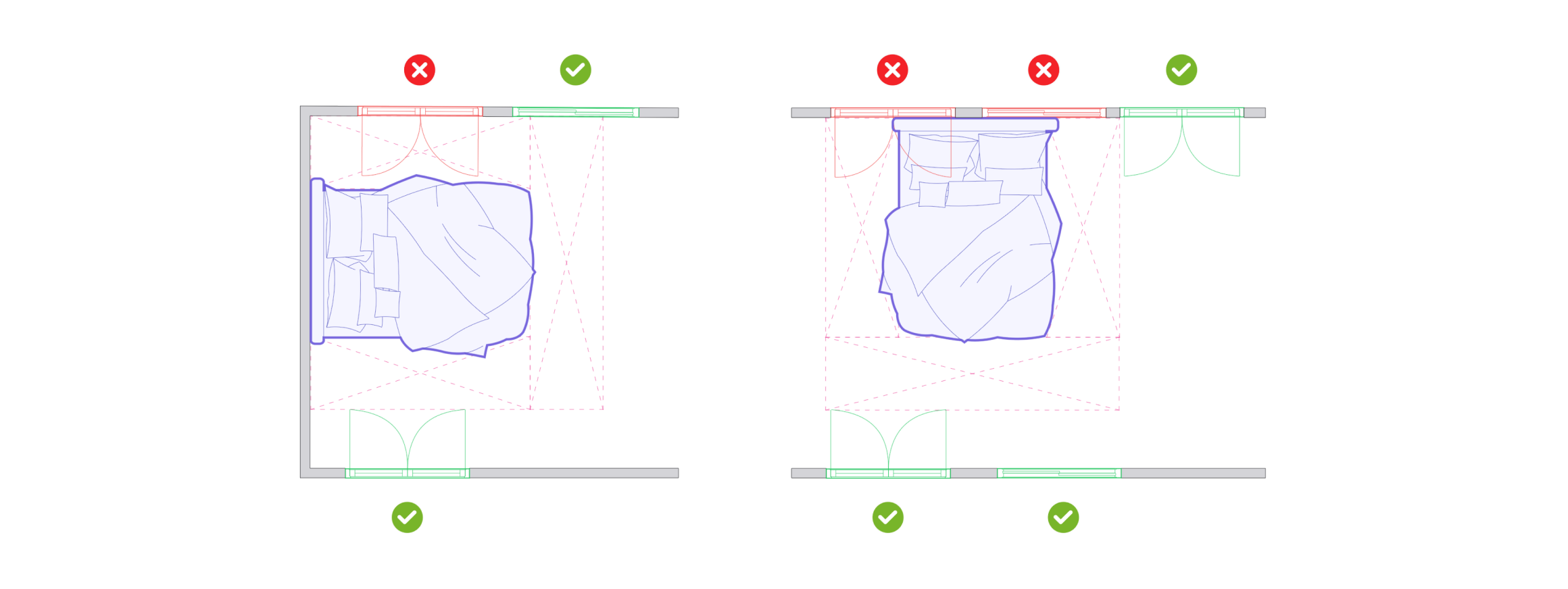Everything about designing a bedroom layout
Bedroom
A bedroom is more than just a space for sleeping; it is a sanctuary for rest, relaxation, and personal reflection. It's a place to unwind after a long day, read a good book, or snuggle up with a loved one. To create a functional bedroom, you'll need to consider a range of factors, from the size and placement of key furniture elements like the bed, nightstands, and wardrobe to the overall flow and composition of the room.
Where Should a Bed be Placed Relative to the Door?
Positioning a bed in a room should be based on the location of the entrance door. To ensure a sense of security and privacy in the bedroom, follow these rules of thumb:
- Place the bed diagonally to the entrance door. Avoid positioning it directly in front of the door.
- Do not place the bed headboard near the door.
- Preferably, locate the bed in a way that allows an unobstructed view of the entrance door from the bed.
Where Should a Bed be Placed Relative to the Window?
There are two types of windows: those with hinges that require clearance for opening/closing and those with railings that are flush with the wall. It's best to avoid placing a bed under a window for the following reasons:
- It may make it uncomfortable to access the window.
- The headboard may block the view of the outdoors.
- It may result in less privacy and too much exposure to outdoor noises, light, and temperature.
However, it's worth noting that sometimes, placing a bed under a window is unavoidable and can even be aesthetically pleasing.
Bedroom Circulation & Clearance
The circulation paths in a bedroom must be at least 75 cm / 29.5" wide. Sometimes, these paths overlap with the clearance space required for furniture, like in front of a sliding door or a chair and desk. However, in the case of open-door closets or TV units with drawers, additional space is needed to ensure comfortable access.
Distance Between Bed and TV
The recommended distance between a bed and a TV can be achieved by multiplying the TV screen size (diagonal between cross corners of the screen) by 1.2.
For example, here is a Bed-TV Viewing Distance Chart:
- 50” TV: 150 cm / 59.1" from bed
- 55” TV: 166 cm / 65.4 from bed
- 65” TV: 180 cm / 70.9" from bed
- 70” TV: 213 cm / 83.9" from bed
- 75” TV: 231 cm / 90.0" from bed
- 85” TV: 258 cm / 101.6 from bed



